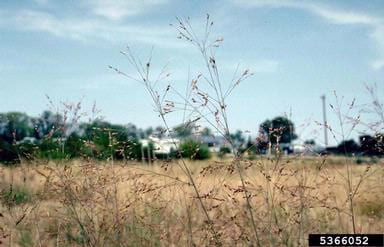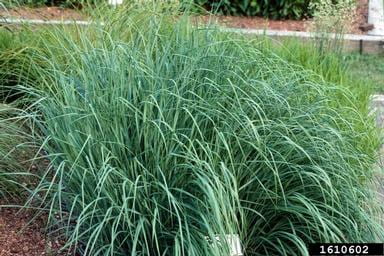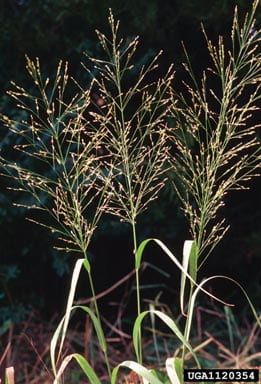Switchgrass (Panicum virgatum) is a perennial and drought tolerant grass species. This grass is used as a biomass (biofuel) crop, but it is increasingly becoming a problem in late sweet corn systems as a harvest impediment in NYS.
Identification
Seedlings: The leaf bud is rolled.
Flowers/fruit is an open panicle. Seeds begin as pink or a slight purple; by fall they turn golden brown.
Panicle size: 15-20 inches (38-51 cm) long
Management
There are very few resources that address P. virgatum directly as a weed problem as this is an emerging issue. However, here are some general thoughts.
Chemical
An herbicide for monocots or grasses can be used as a last course of action. Use CCE of Eastern NY Horticulture’s herbicide lookup tool to find efficacy of various herbicides on other Panicum species (witchgrass and fall panicum) and other perennial grasses (Johnsongrass, quackgrass, perennial ryegrass and wirestem muhly). For general guidance on weed control, get the latest edition of the Cornell Crop and Pest Management Guidelines.
Similar species
Table 8: Compares the Panicums: fall panicum (Panicum dichtomiflorum), switchgrass (Panicum virgatum), and witchgrass (Panicum capillare) illustrating their similarities and differences.
| Species | Fall panicum (Panicum dichtomiflorum) | Switchgrass (Panicum virgatum) | Witchgrass (Panicum capillare) |
|---|---|---|---|
| Similarities | Summer annual; leaf bud rolled; no auricle; ligule fringe of hairs; fibrous root system | Leaf bud rolled; no auricle; ligule fringe of hairs | Summer annual; leaf bud rolled; no auricle; ligule fringe of hairs; fibrous root system |
| Differences | Seedling leaf sheaths are densely hairy, blades are hairy on lower surface; mature blades and sheaths are smooth on both surfaces. | Perennial; leaf blade is hairy on upper side; sheath is hairy at margins; it produces rhizomes | Seedling sheath, blade, and collar are densely hairy; on mature plant, leaf blades on both surfaces and leaf sheaths are densely hairy |
Herbicide resistance
Reported as of 2021:
None
For a more detailed report, please visit the reference section below or visit the International Herbicide-Resistant Weed Database homepage for more information: http://www.weedscience.org/Home.aspx
References
For more information please look the upcoming book, Manage Weeds on Your Farm: A Guide to Ecological Strategies by Charles L. Mohler, John Teasdale, and Antonio DiTommaso (Publisher: SARE Outreach, expected late fall of 2021).
Uva R H, Neal J C, DiTomaso J M. 1997. Weeds of the Northeast. Book published by Cornell University, Ithaca NY. The go-to for weed ID in the Northeast; look for a new edition sometime in 2019.
Here is a quick ID reference from the USDA on select native grass including switchgrass.
The Lady Bird Wildflower Center from the University of Texas at Austin has a page on switchgrass control.
Cornell University’s Turfgrass and Landscape Weed ID app. Identification and control options for weeds common to turf, agriculture, and gardens in New York; uses a very simple decision tree to identify your weed.





